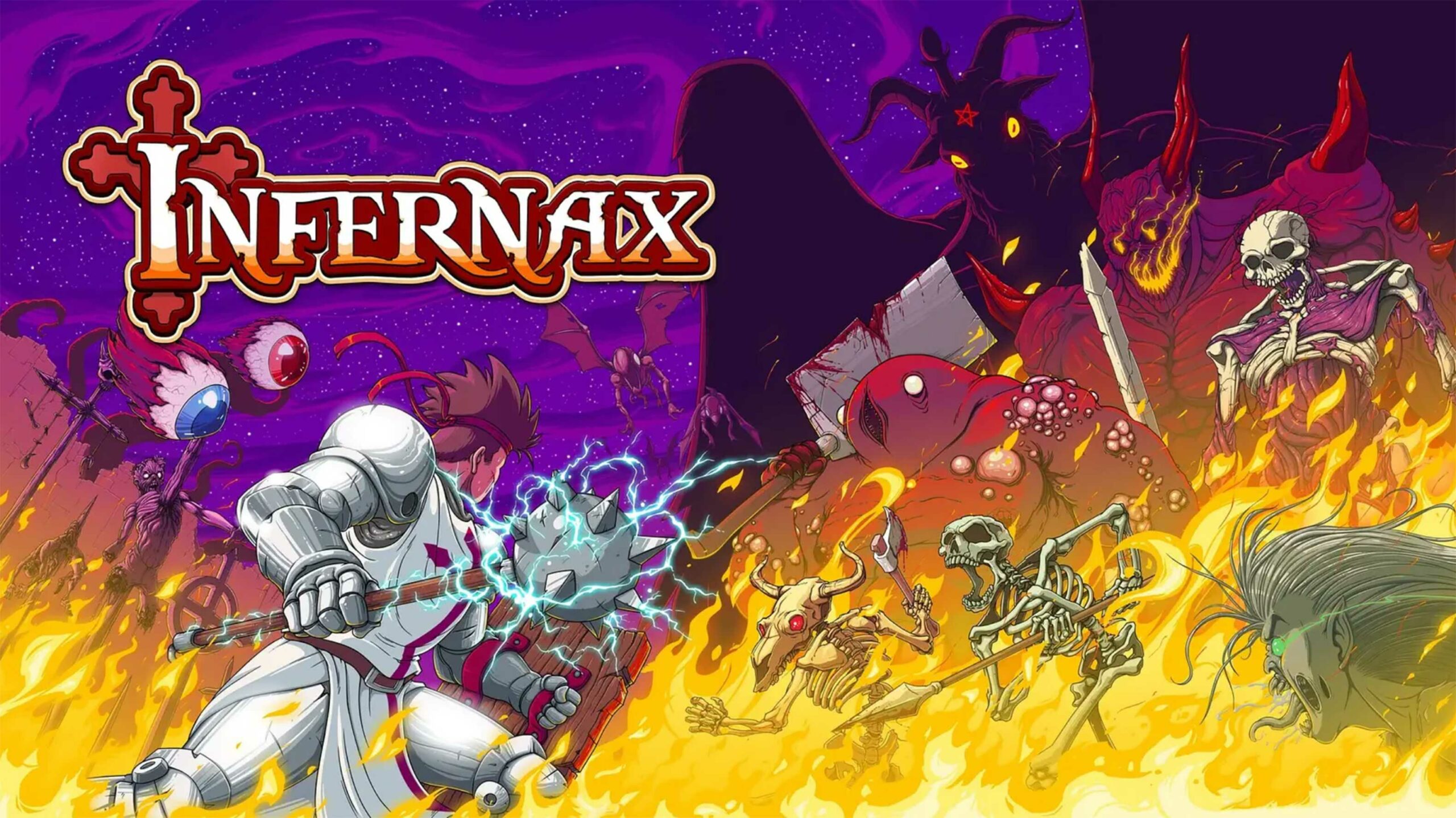
At this point, it’s not uncommon to say a game is “inspired by Castlevania.” After all, the Konami gothic horror action-adventure/platformer series is one of gaming’s all-time greats.
But Infernax, the latest game to wear those Castlevania inspirations proudly on its shoulder, is doing things a bit differently. To be sure, Infernax takes cues from both Castlevania II: Simon’s Quest and The Legend of Zelda II: Adventure of Link to deliver a 2D Medieval monster-killing adventure. However, Berzerk Studio, the game’s Quebec City-based indie developer, is taking some steps to make the experience its own.
According to Mike Ducarme, Berzerk’s self-proclaimed ‘Word Wizard/Cat Herder,’ it’s been about a 10-year process to make Infernax. At the time, it started as a side project for Berzerk, which had a desire to make the über badass, violent game that he says a “sugar powered kid” would have dreamed up. But as Ducarme notes, Berzerk was making Flash games then, which didn’t jive well with the Infernax concept.
“Flash games were not known to be well-received when they were too violent. So we could not find any funding. So we ended up just shelving it for a while and just work on it again when we thought we could make it on our own dime. And we never could until now, like three years ago, when we finally got success through console games with [our 2018 action-rhythm game] Just Shapes & Beats. We decided we could make a new console game with this now, and we’ll make it at the scope we wanted, not just a two-week project.”
Finding the support of publisher The Arcade Crew proved essential, as it helped the once-three-person team — consisting of Ducarme, Etienne Jean and Simon “Lachhh” Lachance — bring on a few extra people to help out. The team now sits at about 12 people. It’s a good thing that happened, as Ducarme points out that crafting that Castlevania-esque NES art style was “super hard,” especially given Berzerk’s prior experience with Flash games, not pixel-based titles.
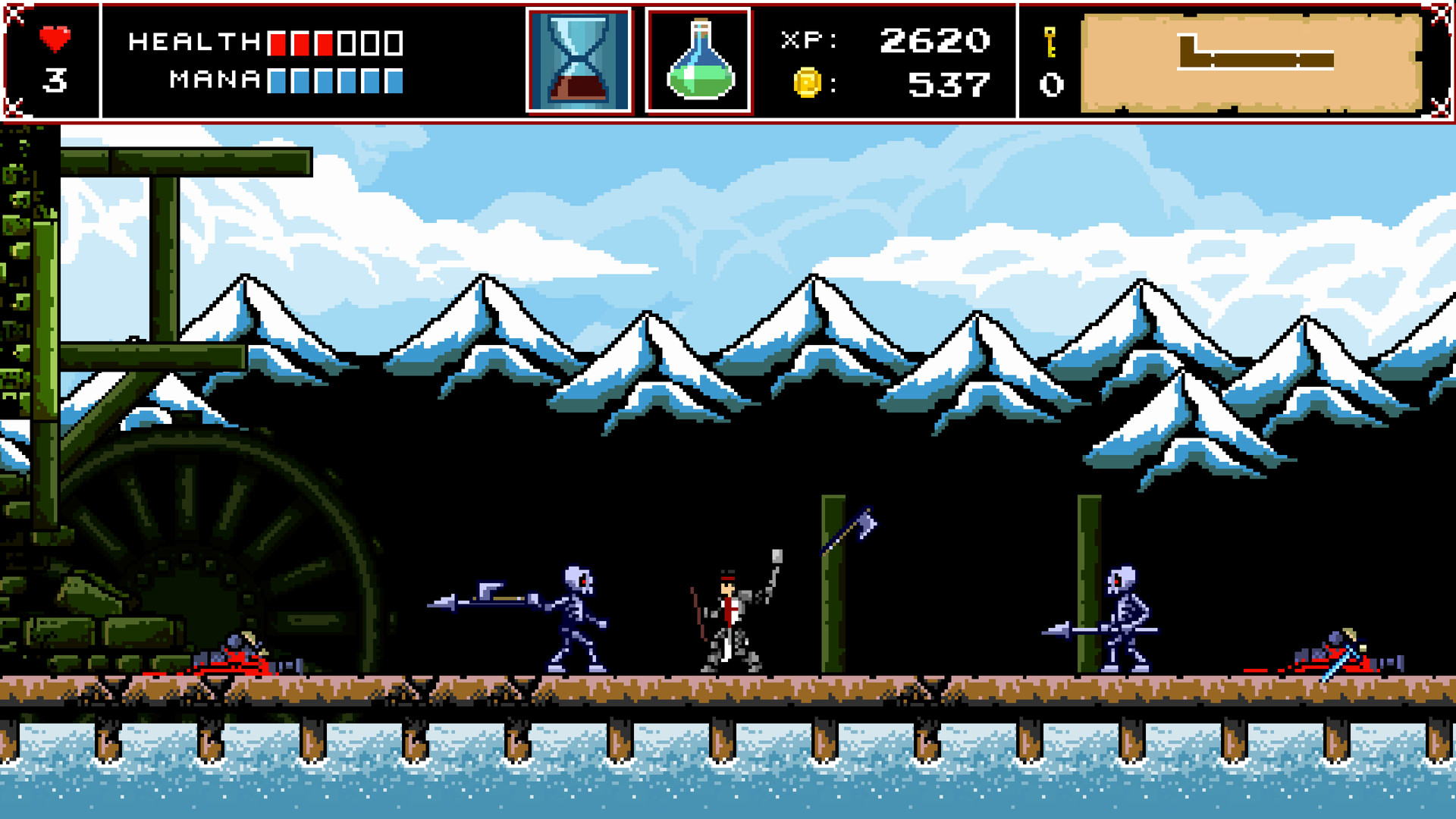
“We didn’t have the technology when we first started because we couldn’t just take an ‘NES Maker’ — we weren’t making a Flash. And there was no pipeline yet because it was before Shovel Knight, it was before Mercenary Kings, it was before every single pixel game back then — pixels were not the new genre coming out; that came like a year after when we first started.”
He says “that handcrafted Flash style” was “not very compatible with pixel art,” prompting the team to play a bunch of pixel games from which they could draw inspiration. Ultimately, the finished product speaks for itself — it looks right at home with something like Castlevania: Rondo of Blood.
But visuals, of course, are only one part of the experience.
Kicking it old-school
In the game, you play as a great knight named Alcedor who returns to his homeland, only to find that it’s been overrun by deadly creatures. To fight off these enemies, you’ll wield a mace, shield and magical abilities, earning XP to upgrade Alcedor and coin to purchase new gear.
Structurally, Infernax has an “open-world” of sorts, in which players come across dungeons, towns, bosses and secrets. But Ducarme says it’s definitely more like The Adventure of Link in terms of scope.
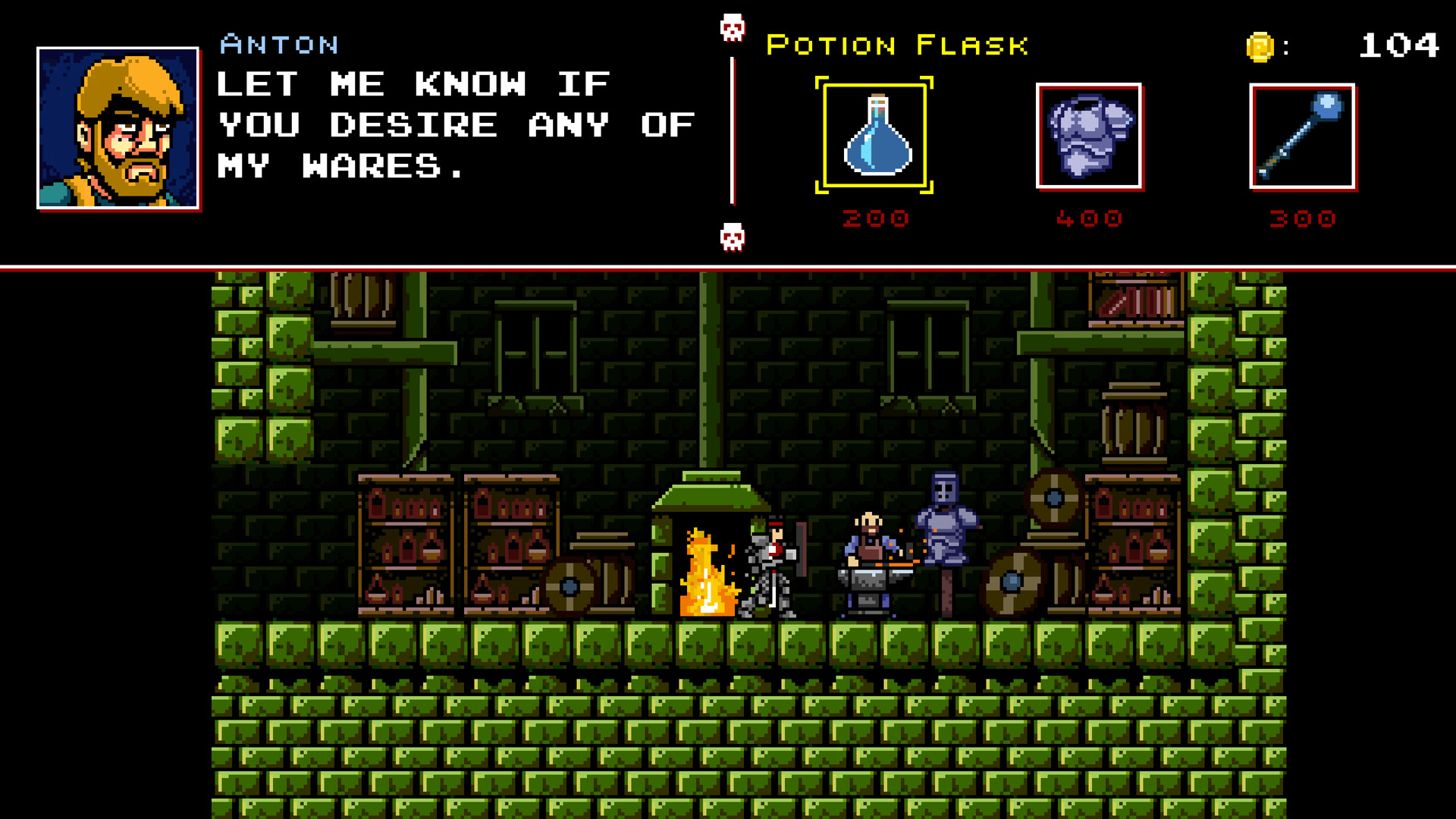
“The inspiration is definitely Zelda II for that because this entire map has got smaller villages, and in each village, you would have quests. And the difficulty about it was just making it big enough so that people would see that it’s a world, but not too big that people would just see it as a grind of going between towns when they don’t have this spell that will travel them to town, and stuff like that. So we needed to find that sweet spot of between too long and not long enough, which is hard because everybody else has different opinions about it.”
But Infernax changes up the game a bit in terms of how you actually interact with the world. That’s because the game has a light choice system that affects how certain events play out over time and even leads to different endings. For instance, Ducarme says saving someone might have one particular impact, while letting them die might reward you in a different way via another yet-to-be-seen faction.
“It’s a battle between good and evil, but we don’t want to say ‘good versus evil.’ It’s more like, ‘good and bad,’ because it’s not actually evil, you’re just not doing the right thing, according to the game, but according to your character, you’re doing it in character, basically. So you’re just aligning yourself with different factions, [which] will unlock different quests, different weapons, different spells. But if you decide to just do a bit of both, you will have something different entirely than if you just went full-on that side, or full-on that side. You can do a mix-and-match — the story will always follow, but you will have different abilities.”
Making things more inviting and fun
Commendably, Berzerk has also made a conscious effort to try to make the game more accessible to welcome more players. But as Ducarme wrote on the PlayStation Blog, “accessibility and old school design go hand in hand about as well as anchovies on a pizza.” It’s a fair point; while it’s an ongoing conversation nowadays, that certainly wasn’t the case in the ’80s. At the same time, Berzerk wanted to keep the game challenging. While the team has added different difficulty modes and cheats to assist players, Ducarme admits this was a difficult balance to strike.
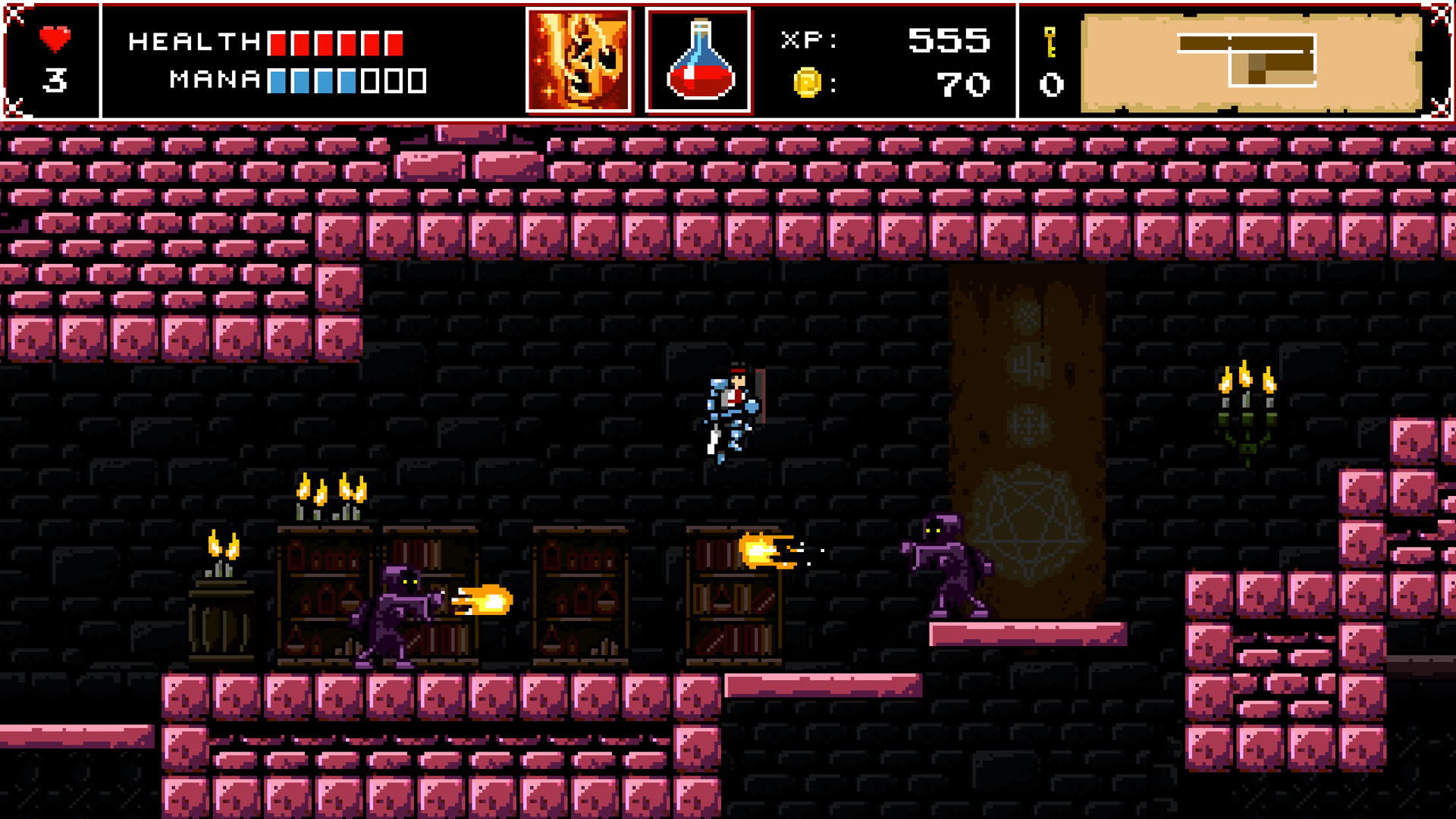
“The thing with old-school design was that it was hard on two parts: you had to do it all perfectly, and you had to do it perfectly for a long time. You had two points of saves, and you just have to do it perfectly every single time you die to relearn that entire part,” he says. “So without filtering out the difficulty, because we didn’t think that would be respectful to the players and say ‘well, if you’re not good enough for this, we’re going to make it easier,’ we just decided to make more checkpoints. Therefore, you will have the same difficulty but you have more chances at it. Whenever you do it, you’ll have quicker checkpoints, so you don’t have to learn that entire passthrough, you just have to learn this part.”
At the same time, he concedes that this is Berzerk’s first real attempt at accessibility, so it’s been a learning experience for the team.
“There’s nothing revolutionary there because we’re not experts [on that]. We used to make Flash games back then all we had to make sure is that people will not have seizures when playing the game. So this is all new to us. We’re learning something new every day about it, and it’s scary because it’s, honestly, people’s lives. But it’s also super comforting that whatever we try to implement is probably going to at least be appreciated by the people that are affected by [disabilities].
For all the game’s difficulty, though, Berzerk is also trying to keep things light. Watch a bit of Infernax gameplay and you’ll see that it’s got some humour to it, particularly through the comically over-the-top death animations for Alcedor. The game even has an endearing, fun marketing campaign.
https://twitter.com/infernax/status/1482100271237206016
“That came from the brain of Etienne, our credited director,” says Ducarme of the game’s blood and gore.
“He’s the kind of guy who will just bury down in his cave and just read books about stuff like Lovecraft — horror and stuff like that. We decided, ‘well, we should make all the monsters be so disgusting that it makes you feel uneasy, and things like that. So he just inspired himself from a bunch of other media — a lot of other games like Contra, that would have big floating brains with robot parts, which is right down our alley.”
That said, Ducarme is quick to mention that the team isn’t leaning completely into levity.
“We didn’t want to go full throttle [with] humour, because we didn’t think it would [do] the game justice. Because the story behind it is kind of serious, but we still wanted to have that lightheartedness. Because we’re not serious people, we’re grown-ass adults. But we’re grown-ass kids more than adults,” he explains with a laugh.
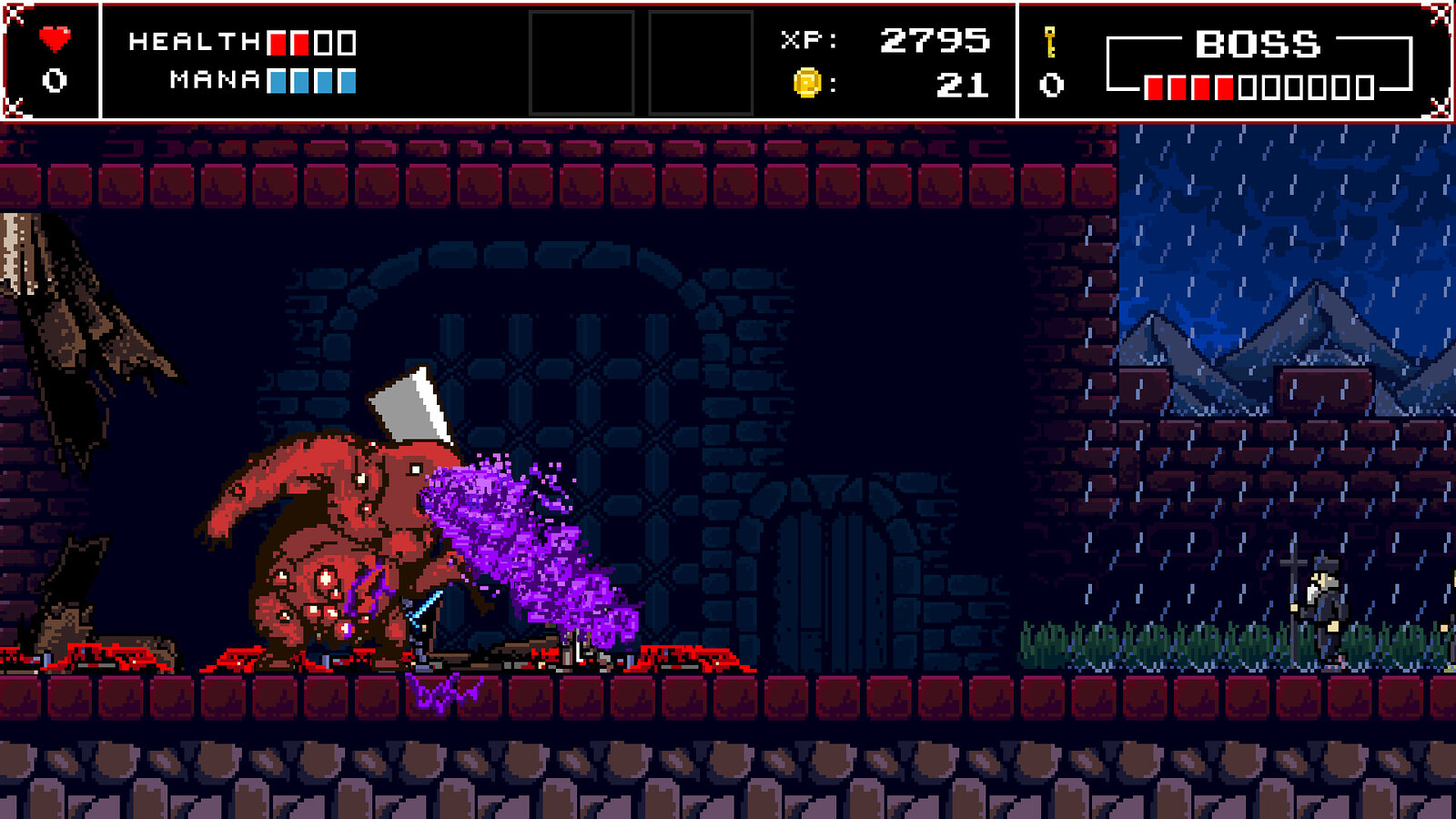
“So we tried to infuse that with more of a humorous side, but not too much that it weighed down the story. Sometimes there are things that are so over-the-top that it’s funny. Like there’s a guy hanging out by a door and there’s just a big cleaver coming up and ripping everybody out. And that’s the joke, but the story is not that funny. It’s more about the situation that could be funny if you have a twisted mind like us. But since we’re not serious people, just making a super serious game about a serious thing would not have worked at all — we still need them to have that little funny thing, or we could not tell the story correctly.”
Ducarme concludes the interview by pointing out one other thing he’d like people to look out for.
“I’m so excited for people to find our easter eggs. We have so many of them in there just hidden somewhere — all callbacks to older games [including our own], and just random endings that you should not find. ‘Well, now I see this cutscene for no reason, because I just did something dumb that shouldn’t have happened.’ [It’s about] rewarding people for thinking outside the box and finding out new ways to die or new ways to do things.”
Infernax will release on PC, Nintendo Switch, Xbox Series X/S, PlayStation 4, and Xbox One on February 14th, 2022.
Update 31/01/2022 3:22pm ET: This story previously mentioned that publisher support was “inessential.” This was meant to say “essential” and has since been corrected. We’ve also clarified that the team was founded by three people but about 12 people have contributed to Infernax.
MobileSyrup may earn a commission from purchases made via our links, which helps fund the journalism we provide free on our website. These links do not influence our editorial content. Support us here.


